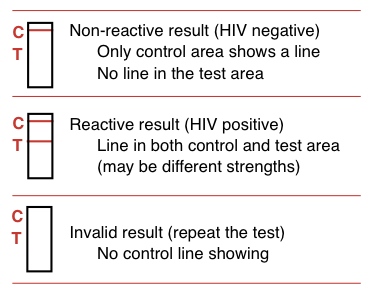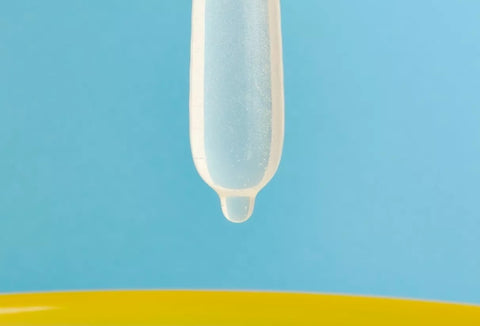How long do results take?
Rapid HIV tests can give results in 15 to 60 minutes, or on the same day.
‘Rapid’ refers to the time taken for the results and not to the time between exposure and the test.
If samples are being sent to another lab, results can take from a few days or a few weeks.
Rapid blood tests put a pin-prick of blood on a testing strip. This test takes about 15 to 20 minutes so you can get the results whilst you wait.
Some rapid tests also work on oral samples rather than blood. Although they are sometimes called saliva tests this is not accurate. Oral samples collect cells from the surface of the gums and not saliva. These cells contain HIV antibodies.
When samples are sent to a lab you can either collect your results in person or they will be posted out to you. It is your responsibility to get the results. A few clinics may give results over the phone.
Rapid tests involve a 3 month window. This means the results tells you your HIV status three months ago. A positive result from a rapid test always needs to be confirmed by a different laboratory test. If you have had other recent risks, a negative result needs to be confirmed in three months.
How are results reported?
Your test centre should clearly explain the results of your test.
If you have questions that were not explained, or that still worry you, ask the test centre first.
Rapid blood tests show two lines if positive or one line if negative, in a similar way as a pregnancy test (see Figure 8).
Results from laboratory tests are given as negative, positive or indeterminate.
- Negative or non-reactive means you are HIV negative. You do not have HIV (based on the window period and no recent risks).
- Positive or reactive means the test shows you are HIV positive and you have HIV infection.
- Indeterminate means the test result was unclear and needs to be repeated.
Example results from a rapid test

What If Your HIV Test Result Is Negative?
If your HIV test result is negative, it doesn't necessarily mean you don't have HIV. That's because of the window period—the time between when a person gets HIV and when a test can accurately detect it. The window period varies from person to person and depends on the type of HIV test you take.
Ask your health care provider or testing counselor about the window period for the type of HIV test you’re taking. If you’re using a self-test, you can find that information in the test package.
If your test result is negative, get tested again after the window period to be sure. If your test result is negative again, and you have had no possible HIV exposure during the window period, then you do not have HIV.
What’s next? Now is a good time to think about your HIV prevention options. If you’re sexually active or use needles to inject drugs, continue to take actions to prevent HIV, like taking pre-exposure prophylaxis, or PrEP (medicines to prevent HIV) if you’re at high risk or using condoms the right way every time you have sex.

If you have certain risk factors for HIV, you should continue to get tested at least once a year. Learn more about who is at risk for HIV and why they should be tested more often.

